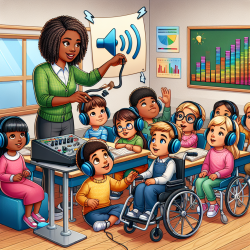The Positive Behavioral Interventions and Supports (PBIS) framework has revolutionized how schools create positive, safe, and productive learning environments. However, the journey towards educational equity doesn't stop with standard PBIS implementation. To truly unlock the full potential of PBIS, integrating cultural responsiveness is essential. This guide aims to assist trainers, coaches, and school leadership teams in weaving culturally responsive practices into the fabric of their PBIS framework, ensuring that every student feels valued, understood, and supported.
Understanding Cultural Responsiveness within PBIS
Cultural responsiveness in PBIS is not a separate entity but a core component of effective implementation. It involves recognizing and honoring the diverse cultural backgrounds of students and using this understanding to enhance the educational experience for everyone. This approach is built on several key principles:
- High expectations for all students
- Using students' cultures and experiences as assets in learning
- Providing equitable access to effective instruction and resources
The Need for a Culturally Responsive Lens
Effective school environments are inclusive and reflective of the communities they serve. Unfortunately, students from non-dominant cultures often face unintentional slights that can undermine their connection to the school. A culturally responsive PBIS framework seeks to remedy this by ensuring that the school's social environment validates and affirms every student's identity, including their culture and learning history.
Key Components of Cultural Responsiveness in SWPBIS
To achieve cultural responsiveness within a SWPBIS framework, schools must focus on:
- Identity: Understanding how personal and cultural identities impact teaching and learning.
- Voice: Ensuring all students have the opportunity to express themselves and are heard.
- Supportive Environment: Creating spaces where students feel safe and respected.
- Situational Appropriateness: Recognizing and valuing the context of students' behaviors and responses.
- Data for Equity: Using data to identify and address disparities in student outcomes.
Implementing Cultural Responsiveness in PBIS
The journey towards integrating cultural responsiveness into PBIS begins with identity awareness—understanding the cultural identities of both staff and students and how these identities influence the school culture. From there, schools can use the SWPBIS Tiered Fidelity Inventory (TFI) Cultural Responsiveness Companion to assess and enhance the cultural responsiveness of their PBIS systems. This process involves revisiting team composition, operating procedures, behavioral expectations, and discipline policies to ensure they reflect and respect the diverse cultures within the school community.
Technical and Adaptive Changes
Adapting PBIS to be culturally responsive involves both technical changes (e.g., modifying practices and instructions) and adaptive changes (e.g., shifting values, beliefs, and approaches). It's about more than just adding new strategies; it requires a fundamental transformation in how schools view and interact with their students and communities.
Conclusion
Creating a culturally responsive PBIS framework is a dynamic and ongoing process. It requires commitment, reflection, and a willingness to adapt and grow. By focusing on the core components of cultural responsiveness, schools can build environments where every student feels seen, heard, and supported, leading to more equitable and positive outcomes for all.
For more information, please follow this link.










